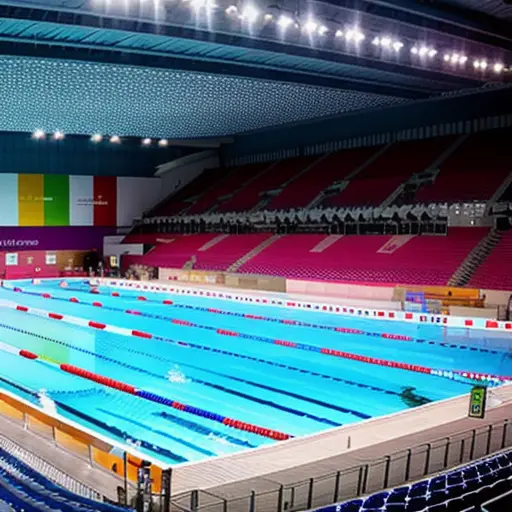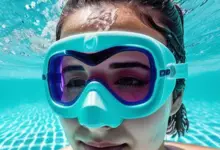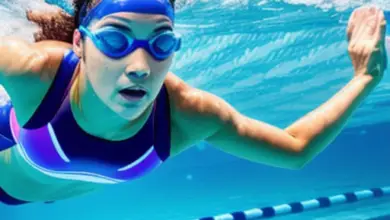How Many Gallons In an Olympic Swimming Pool and All Other Specifications
Olympic-sized swimming pools are a marvel of modern engineering, designed to provide an optimal environment for competitive swimming events. They have been a standard part of the Olympic Games since 1924, and with strict specifications set by the International Swimming Federation (FINA), these pools continue to impress both swimmers and spectators alike. An Olympic swimming pool measures 50 meters in length, 25 meters in width, and at least 2 meters in depth. The depth of the pool plays a crucial role in minimizing water disturbance, thereby enabling swimmers to perform at their best. Moreover, maintaining a water temperature between 25-28 °C balances the swimmers’ comfort and their ability to achieve peak performance. Hosting approximately 660,430 US gallons, or 2.5 million liters of water, these massive structures truly exemplify the grand scale of the Olympic Games and the passion that drives athletes to compete on the world stage.
Specifications for Olympic-sized swimming pools
Olympic-sized swimming pools are designed with specific dimensions and features to ensure a fair and consistent environment for athletes during competitions. These pools must be 50 meters long, 25 meters wide, and at least 2 meters deep – this equates to a volume of approximately 2,500,000 liters, or 660,430 US gallons, of water. Additionally, Olympic pools are required to have 10 lanes, each with a minimum width of 2.5 meters, and the outer two lanes left empty as buffers against water disturbance from the pool’s edges. Temperature regulations also play a crucial role in maintaining optimal performance conditions, with water temperatures in Olympic pools required to fall between 25-28°C. These stringent specifications have been established by the International Swimming Federation (FINA) to provide a level playing field for all competitors and ensure record comparisons are made fairly.
History of Olympic-sized swimming pools
Swimming has been a part of the modern Olympics since its inception in 1896, with only four of the original sports still present today: athletics, fencing, artistic gymnastics, and swimming. In the early days, Olympic swimming competitions were held in open water, like in the Mediterranean Sea during the 1896 Athens Olympics. The first Olympic swimming pool was built for the 1908 London Olympics, measuring an impressive 100 meters long and situated right in the middle of the athletics running track. However, it was during the 1924 Paris Olympics that the standard Olympic-sized pool measuring 50 meters long and 25 meters wide was introduced. Over the years, the design and specifications of Olympic pools have evolved with guidelines set by the International Swimming Federation (FINA), including a minimum depth of 2 meters, 10 lanes each with a width of 2.5 meters, and temperature regulations between 25-28°C. These changes all aim to ensure fair and optimal conditions for athletes, enabling them to perform at their best, and allowing for accurate comparisons between records across different competitions.

The importance of depth in Olympic-sized swimming pools
The depth of an Olympic-sized swimming pool plays a significant role in ensuring optimal performance and safety for elite swimmers. According to the International Olympic Committee and FINA regulations, Olympic pools must have a minimum depth of 2 meters (6 feet 7 inches), with a recommended depth of 3 meters (9 feet 10 inches). This requirement is crucial for several reasons.
Firstly, the deeper pool minimizes water turbulence, as it takes longer for waves generated by swimmers’ movements to reach the bottom and rebound to the surface. This reduced turbulence allows swimmers to maintain speed and avoid being slowed down by choppy waters. It also reduces the risk of interference between competitors, promoting fair competition.
Secondly, deeper pools offer increased safety for athletes, particularly when using starting blocks for diving starts. A minimum depth of 1.35 meters (4.4 feet) is required beneath the blocks to avoid the risk of injury as swimmers dive into the water. This helps ensure that they can fully focus on their performance without worrying about potential hazards.
In conclusion, the importance of depth in Olympic-sized swimming pools cannot be overstated, as it serves to both enhance swimmers’ performance and protect their well-being during high-level competition.
Temperature regulations for Olympic-sized swimming pools
Maintaining an optimal water temperature in Olympic-sized swimming pools is crucial for the comfort and performance of the athletes. The International Swimming Federation (FINA) has established specific temperature regulations for these pools to ensure a fair and consistent competitive environment across all events. According to FINA guidelines, the water temperature in an Olympic-sized swimming pool must fall within the range of 25-28 °C (77-82.4 °F). This temperature range provides a comfortable environment for the swimmers and has been found to have a significant impact on their performance. In the 1952 Helsinki Olympic Games, swimmers faced water temperatures as low as 13.1°C, which notably affected their performance levels. By maintaining a consistent water temperature, athletes can fairly compare their times and achievements with those of previous competitors, further enhancing the spirit of the Olympic Games.
Lanes in Olympic-sized swimming pools
Olympic-sized swimming pools are specifically designed to adhere to international competition regulations. These pools are an impressive 50 meters long, 25 meters wide, and have a minimum depth of 2 meters. One of the most significant features of these pools is their lane structure. Traditional pools used in Olympic Games and World Championships have 8 lanes, each with a width of 2.5 meters. However, in recent years, an alternative design with 10 lanes has been approved by FINA, the international governing body for swimming. This updated design offers certain advantages, such as providing buffer lanes that help dissipate water churn and waves generated by swimmers’ movements. In terms of capacity, an Olympic-sized swimming pool holds approximately 2.5 million liters of water, which is equivalent to around 660,000 US gallons.
Comparison to other types of swimming pools
When comparing various types of competitive swimming pools, the Olympic-sized pool stands as the largest and most prestigious option in the sports world. This impressive pool measures 50 meters in length and typically holds around 500,000 gallons of water. Its depth is at least two meters, and it features ten lanes, each with a width of two and a half meters. In contrast, smaller pools used for high school and college competitions in the United States often measure 25 yards in length and are referred to as short course yard (SCY) pools. Additionally, 25-meter pools, known as short course meters (SCM) pools, are commonly used for international competitions. While all these pools serve competitive swimming purposes, the Olympic-sized pool remains unparalleled in size and significance in the world of aquatic sports.
Use of touch panels in Olympic-sized swimming pools
In Olympic-sized swimming pools, touch panels play an essential role in accurately measuring swimmers’ performances during competitions. Typically installed at both ends of the pool, these panels allow for precise measurement of swimmers’ timings as they complete each lap and reach the finish line. To be eligible for recognition in competitive events, the distance between these touch panels must be either 25 meters or 50 meters. As a result, Olympic pools are generally designed slightly oversized to accommodate these touch panel systems. This helps to ensure that competitions are carried out fairly, with swimmers’ timings accurately recorded at every stage of the race. Overall, touch panels contribute significantly to the efficiency and accuracy of swimming competitions held in Olympic-sized pools.
Advantages of the 10-lane course for Olympic-sized swimming pools
The 10-lane course for Olympic-sized swimming pools, which debuted in the 2009 FINA Congress, offers several advantages over the traditional 8-lane course. Primarily, the increased number of lanes, from eight to ten, introduces a buffer lane on either side of the pool. This extra space helps absorb waves generated by the swimmers’ movements, leading to reduced water turbulence and an overall smoother swimming experience. Additionally, the depth of these modernized pools is increased, further assisting the lane lines in dissipating water churn. As a result, the swimmers can focus on their performance without being hindered by the water’s disturbances. With these enhancements, it is no surprise that 25 world records were broken in Olympic-sized swimming pools featuring the 10-lane course. The design advancements in these pools contribute to an improved competitive environment for athletes across the globe.
Conclusion and significance of Olympic-sized swimming pools.
In conclusion, Olympic-sized swimming pools hold a significant place in the history and development of competitive swimming. With strict regulations set by FINA, these pools ensure fairness and optimal conditions for swimmers to showcase their talents on a global stage. An Olympic pool measures 50 meters long, 25 meters wide, and at least 2 meters deep, holding approximately 660,430 US gallons (2,500,000 liters) of water. The temperature is maintained between 25-28 °C, offering a comfortable and performance-enhancing environment for athletes. As a result, the precision and attention to detail in Olympic-sized swimming pools contribute to remarkable achievements and progress in the world of swimming, allowing athletes to fairly compare their performances across different events and venues.








